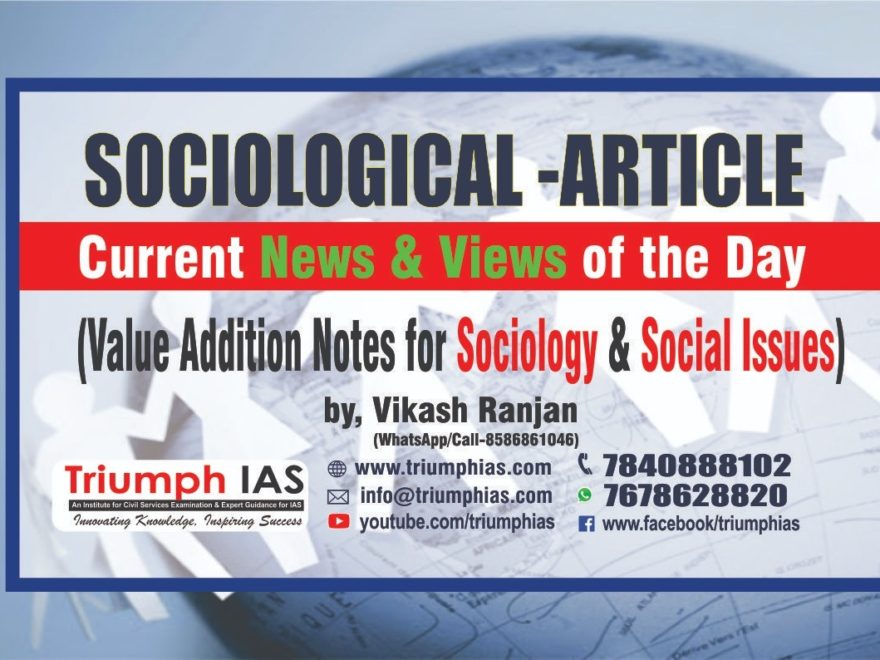Social Exclusion of Dalits
Social exclusion refers to ways in which individuals may become cut off from full involvement in the wider society. It focuses attention on a broad range of factors that prevent individuals or groups from having opportunities open to the majority of the population.
Social exclusion is a very widely practised concept in India.
In India, caste is possibly the oldest type of social stratification. The caste system, which is based on occupation and is sanctified by religious texts and solidified by inter-marriage and inter-dining regulations, effectively arranges diverse groups in Hindu Indian society into an occupation-based hierarchy.
The age-old concept of untouchability still plagues modern Indian society. More than 160 million people in India (Dutt, 2016) are labelled as untouchable by birth because of their caste. They are
viewed as impure and have numerous human rights violations done to them since they’re treated as outcasts. By outcasts, it’s meant that they’re from a caste that isn’t even deemed worthy enough to be explicitly mentioned in the caste system. Hindus believe that people are born into four main castes- brahmans, Kshatriyas, Vaishyas and Shudras. The Dalits fall even lower than the Shudras in this hierarchy which earned them the tag of untouchables.

viewed as impure and have numerous human rights violations done to them since they’re treated as outcasts. By outcasts, it’s meant that they’re from a caste that isn’t even deemed worthy enough to be explicitly mentioned in the caste system. Hindus believe that people are born into four main castes- brahmans, Kshatriyas, Vaishyas and Shudras. The Dalits fall even lower than the Shudras in this hierarchy which earned them the tag of untouchables.
Since they’re considered contaminated by birth, they’re made to do all the disgusting and low paying jobs that all the other castes are too elite to do themselves. They’re made to clean toilets, do manual scavenging, clean sewers, and clean away dead animals. Though untouchability was legally abolished in the 1950’s, it still plagues the majority of Indian citizens’ psyche.
How a poverty-stricken Dalit family is treated is very different from how a poverty-stricken family of another caste is treated. Dalits struggle with finding occupations other than what is ascribed to them at birth. Dalit students in government schools suffer a lot of bullying and microaggression. They are taught in separate classrooms and sometimes, Dalit girls are made to perform other jobs around the school that other caste students do not have to do, for example, bathroom cleaning.
Dalit women face plenty of violations, including rapes that are committed without repercussions and with no recourse in court. Dalit women have been compelled to suffer the weight of various injustices, such as being paraded nude, even for trivial arguments, and they make up the majority of victims of gang rapes in India. These humiliations have symbolic value, and they are frequently perpetrated by a group of individuals who intend to teach a lesson to the victim’s family. According to Indian history and traditions, a woman’s body is viewed as a symbol of family and communal honour, making them the easiest and most obvious victims for ‘teaching a lesson to her family or community.
Another criterion along which discrimination occurs is a disability. “Disabled people face multiple types of discrimination and have decreased access to jobs, in education and other socio-economic possibilities” (Sakshi and Kumar, 2019). Most places of work are not designed to be inclusive of people with disabilities, so, consequently, they struggle with fitting in and are excluded from various areas of life.
Disabilities are very stigmatized in India, and people with disabilities are ineligible for full social acceptance. They are viewed as inferior by their peers and are subjected to bullying and microaggressions.
If we look at economic globalization through the lens of disability, we can see that most inclusive economic opportunities only cater to people with disabilities who are highly skilled and educated, (Hirandani, 2010). In India, the majority of persons with disabilities are marginalized. “There are instances where women have been divorced, abandoned, or tortured because they have given birth to a disabled child. Given the preference for sons, even here blame of the mother is more severe in instances of a girl child.”(Ghai, 2002)
There is a structure of hierarchy when it comes to the disability community. People with physical disabilities are considered less disadvantaged and are less discriminated against as opposed to mentally disabled people who face much more stigma and struggle more in places of employment on top of this people with disabilities lack opportunities in getting employed in rural India
SC/ST women with disabilities are frequently exposed to sexual abuse by Dalit and upper-caste males, making them especially vulnerable. SC/ST women, especially those with impairments, are expected to contribute financially to the home while being among the poorest in terms of social mobility, rights, and education. They are considerably more vulnerable inside the family since, especially among minority caste groups, men with disabilities choose non-disabled women as mates.
There is currently no legislation that tackles the increased prejudice encountered by Dalits/Adivasis with disabilities, as well as those who fall into other categories, such as Dalit women, transgender people with disabilities, and others. “Due to a lack of structural and administrative cohesion in the delivery system, micro efforts become valuable as a way forward leading to policy changes. Inclusion practices need not wait to begin only after systemic change take place” (Alur, 2002)
.
Follow us on : https://www.facebook.com/triumphias.vrc

